10 worst foods of my life: From beetle larvae in the Amazon to insects in Cambodia, I’ve tried them all
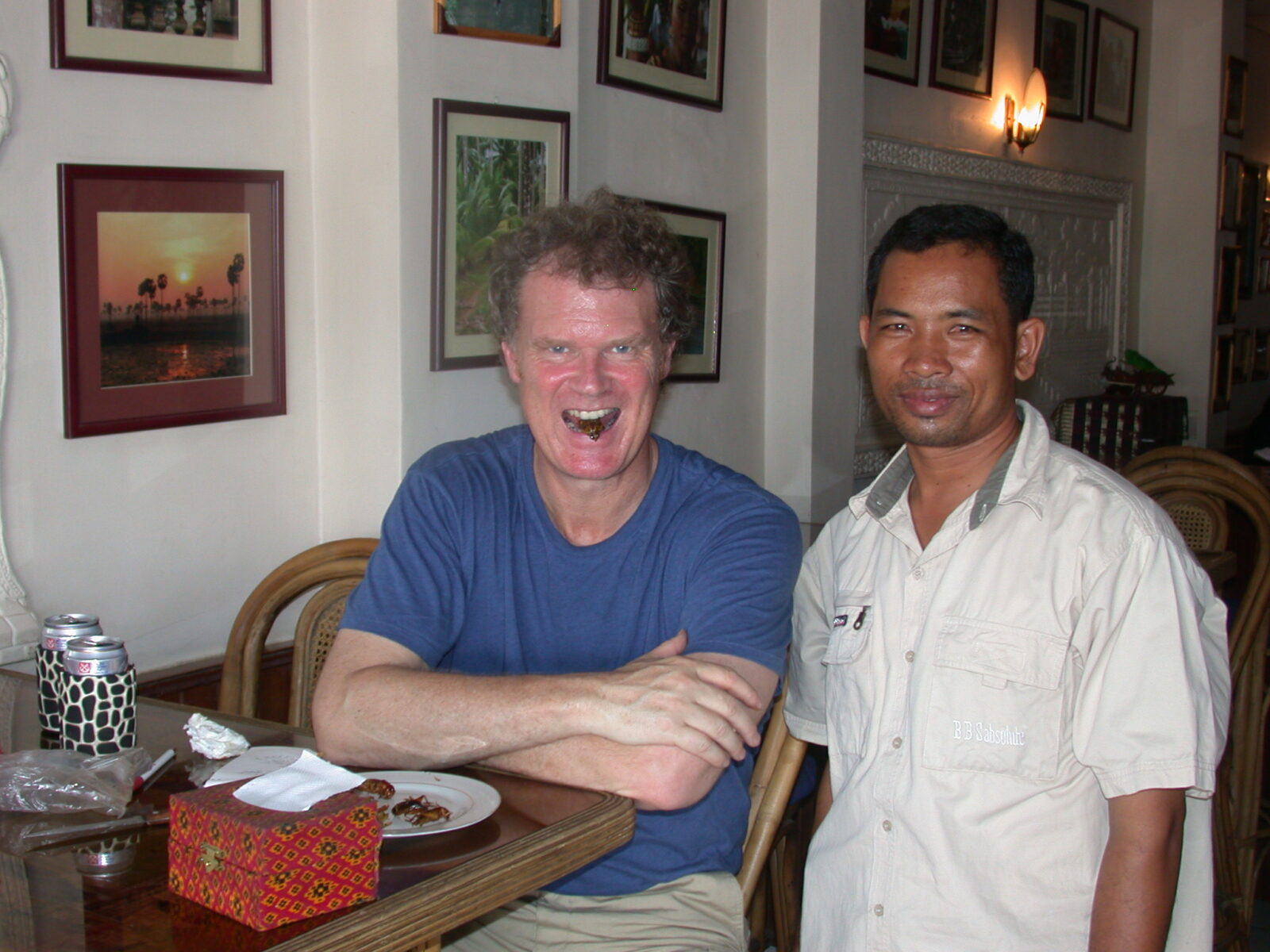
What’s your dream job? Try topping “Traveling Food Columnist.” That was my title for eight years at The Denver Post. It wasn’t full time. I wrote food columns while traveling the U.S. and the world covering sports and travel. The column, with apologies to Ernest Hemingway, was called “A Moveable Feast.” While he wrote about escargot in Paris, I wrote about Waffle House in Georgia.
But it was a wild, delicious ride around the globe. I had chateaubriand in Chateaubriand and Peking duck in Beijing. I ate my way through a fish fry in St. Lucia and a chocolate festival in Perugia, Italy. I spent an entire weekend eating nothing but Texas barbecue.
Of course, it was all in the name of journalistic research.
However, being a traveling food columnist isn’t all bread and caviar. (By the way, the caviar on Russian pancakes filled with smoked salmon and crayfish at Cafe Pushkin in Moscow is fantastic.) It’s also trying foods that sound like a dare. Food is an integral part of culture and when in Cambodia …
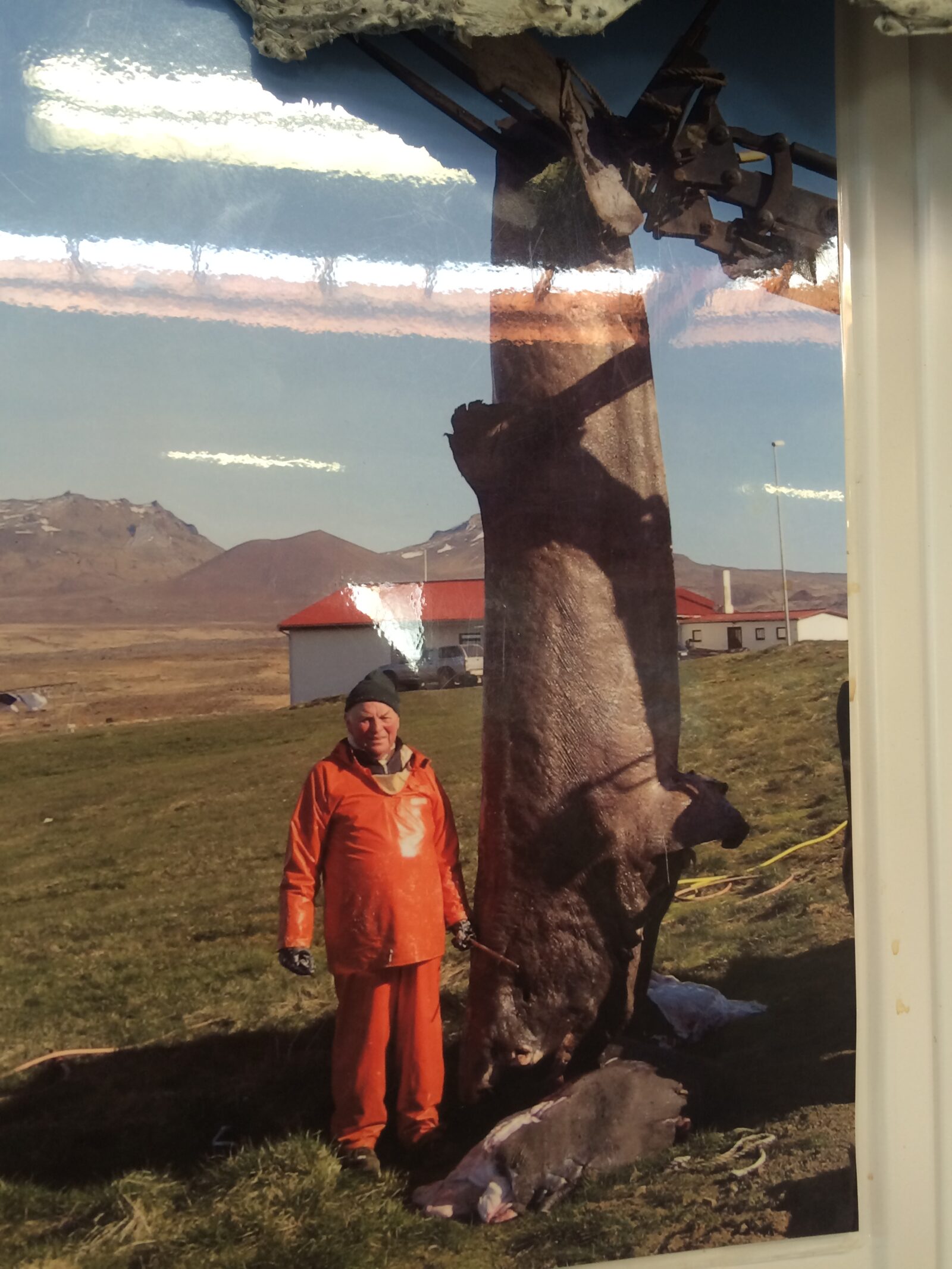
Yes, some of the foods I tried wouldn’t be served in third world prisons. I will try anything once. Maybe not twice but I will try anything once. In fact, some foods that sound awful really aren’t bad. Such as:
- Water buffalo brains sandwich in Egypt. Chopped fine and sauteed in butter then served in fresh homemade bread, it tasted like a mushroom panino.
- Barbecued ram testicles in Nepal. They’re breaded and cooked over an open fire. In the middle of the Himalayas after hiking six hours, they tasted like the heaven just above my head.
- Zebra in Kenya. The Carnivore Cafe in Nairobi serves wild game meat on a rotating basis, depending on the hunting season. They grill zebra over coals and serve it finally chopped. It tasted like lean beef.
- Fermented shark in Iceland. Called hakari, they are fermented for six to nine weeks, hung to dry for three to four months then eaten raw in bite-sized chunks. They tasted a bit like smoked cheese.
- Rat in China. Relax. Hold it in. They aren’t the filthy sewer rats you see all over Southeast Asia. These are white bamboo rats and they raise them for food. They are finely chopped, stir fried and marinated. The experience taught me that if you stir fry and marinate anything, even last week’s newspaper is palatable.
However, honestly, most foods in the world that sound awful are awful. Don’t let any arrogant traveler sell you on his worldliness by saying how much he likes haggis. Haggis sucks. It’s sheep innards, for God’s sake. Yet it’s chateaubriand compared to others. I know. I’ve eaten about everything put in front of me and I’m here to share them with you. (Recipes are withheld for obvious reasons.)
Through 44 years of international travel and 110 countries, I’ve formed a list of the 10 worst foods I’ve ever eaten. It took a while to cut the list to 10. My late mom should be happy. Her vile eggplant, served with maple syrup, didn’t make the cut.
So pull up a chair for a trip to the gastro world’s darkest corners. Don’t bother making a snack. You might not be eating for a while.
Live beetle larvae, Amazon Rainforest, Brazil
They moved. Yes, they actually moved in my hand when the Amazonian guide put them there. They’re small, white and wrinkled. They look like tiny fetuses trying to open their eyes. He told me they are tremendous sources of protein. Not only do the local Amazonian Indians eat them but the Brazilian army does during its maneuvers.
I took them on a 24-hour Amazon survival course. I learned how to live in the jungle for a day with no food. I ate piranha I caught in the river. That was good. Live beetle larvae are not.
What does it taste like? Picture liquified, warm, cottage cheese that has been sitting on Donald Trump’s golf cart seat for six months. I spat it on the ground for five minutes, much to my guide’s amusement.
(Side note: A Masai tribesman in Tanzania once did the same from something I gave him. It was a PowerBar.)
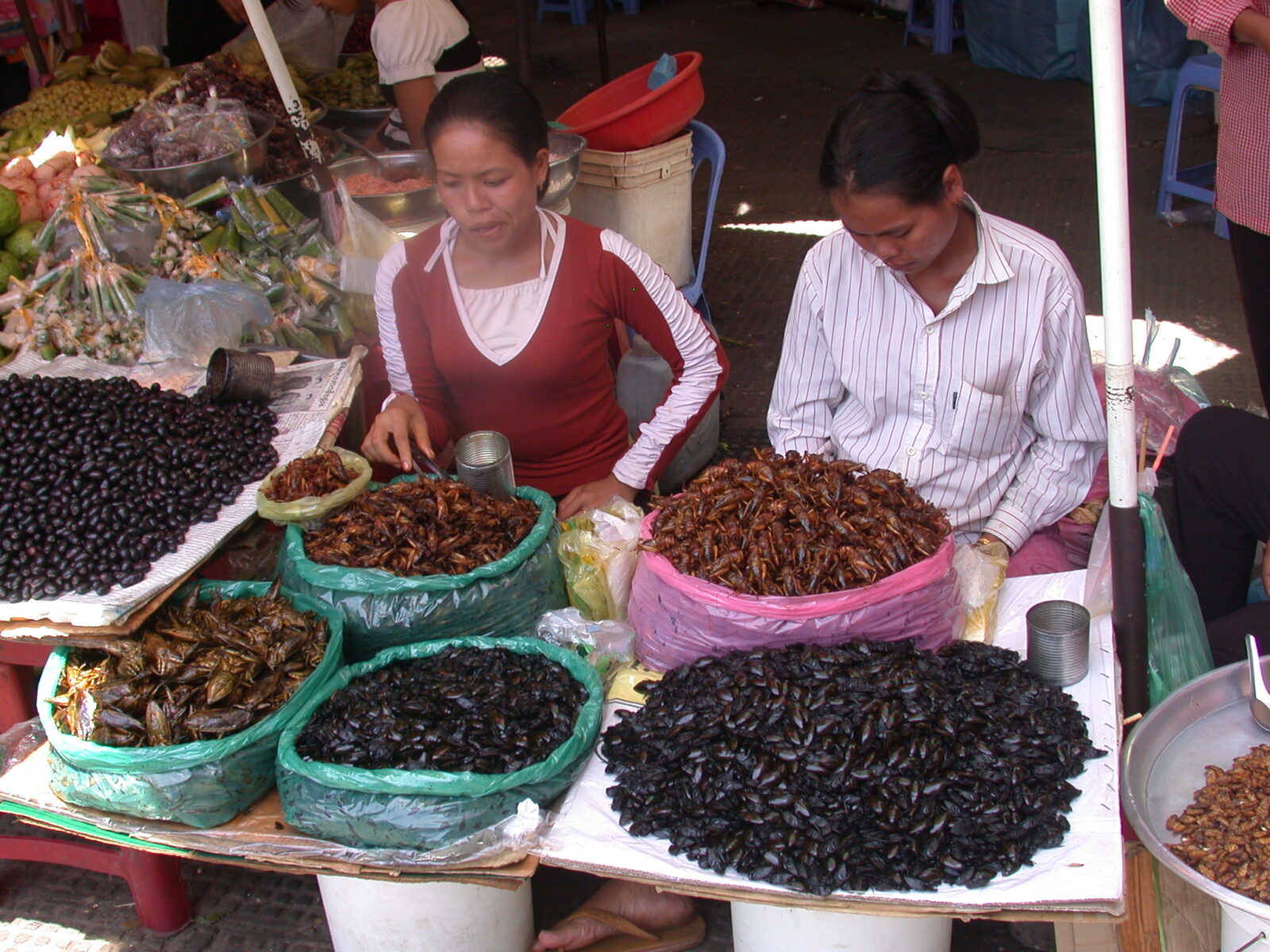
Kadam tuk, Psar Thmei market, Phnom Penh, Cambodia
During Pol Pot’s “agrarian reform” campaign from 1975-79, in which he tried advancing Cambodia by starving his population, insects became a diet staple. Fried tarantulas were on everyone’s table and you can still find those, and various other creatures, at Psar Thmei market, known to Westerners as Central Market. It’s a steaming public market with big baskets filled with some delicious food that would pass at a family BBQ but also insects that would make you scream if you saw one in your kitchen.
I chose one called a kadam tuk. It looks like a 4-inch-long winged cockroach. With big eyes. During the summer rainy season in the eastern province of Prey Veng, they fly into rice paddies and lay eggs on straw mats. Families would catch them by putting a bright light over a mat at night. Attracted to the light, the bugs would smash into the mat and the family would collect them the next day.
Then sell to me.
A cab driver showed me the eating technique. You peel off the wings then you dig your middle finger into the body. When it breaks, pouring out of the cavity is a massive coagulation of green eggs.
Yes, I put it in my mouth. Yes, I swallowed. I then chugged my fastest can of beer since my fraternity initiation. Kadam tuk had the consistency of couscous and the bland flavor, fortunately, of raw meal.
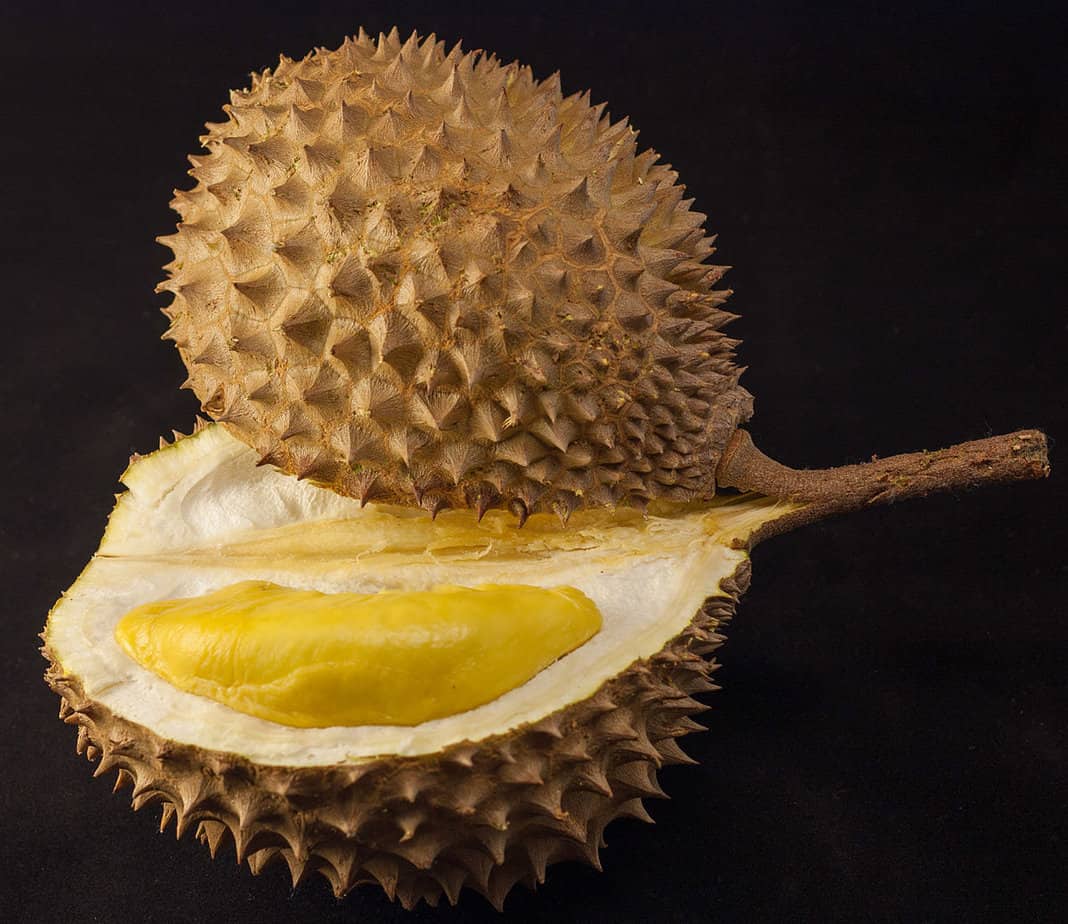
Durian chocolate cake, Bijan, Kuala Lumpur, Malaysia
Durian is a fruit found all over Southeast Asia. It’s easy to find. Just follow the smell of vomit. That’s the aroma it emits. Locals say durian “smells like hell and tastes like heaven.” Wrong. If there’s a heaven, even God would gag on this.
I did. It’s the only food I’ve ever eaten that I couldn’t get down. Bijan, a modern, high-end restaurant on a hill, is the place to go in Malaysia’s capital for authentic Malay cuisine. Maybe it’s too authentic. The chocolate cake is good. But I couldn’t get past the durian icing between the layers. My tongue, taste buds and stomach simultaneously screamed like cooks when a rat walks into the kitchen, “Get that outtahere!”
Sheep penis, Guolizhuang, Beijing
According to Chinese custom, animal penis makes men more virile. That may explain why China has 1.4 billion people. Men flock to Guolizhuang, a penis restaurant complete with a menu listing all their animal penises.
And their pictures.
They range from the teeny-weeny snake penis to the bwana of wildlife, the horse. Its picture took up nearly two pages. It also includes yak penis and seal penis and ox penis and donkey penis … well, you get the picture.
Before the 2008 Beijing Olympics, a photographer and I went for a story which went through many edits before it was presentable to the general population. I ordered ox penis and sheep penis.
Sheep penis was a mistake. (I can’t believe I just wrote that sentence.) It’s boiled, wrapped in peppers and bean curd and then fried. The problem with it is it’s then chopped into bite size bits and they look like … (GASP!) little penises.
The place was filled with men. I asked the pretty waitress in a tight dress if women ever eat there. She said yes and gave some advice: “Women shouldn’t eat testicles. It can give them a deeper voice and beard. But penises are good for the skin.”
So ladies, next time you hear that line from your date, please know he’s only interested in your health.
The above line wound up on The Denver Post’s cutting room floor. So did my last one: “I don’t know how much truth there was into this virility theory, but I just pounded out this column without using my hands. Have a nice day.”
Roast Bone Marrow, St. John, London
The late food guru and author Anthony Bourdain once wrote that the last meal he wanted before he died was the roast bone marrow at St. John. With all due respect to Bourdain, who was as good a food writer as he was a chef, I’d rather die than eat roast bone marrow again.
St. John, a modest restaurant near Smithfield Market, serves real traditional British cuisine. Keep in mind that until a revival over the last couple of decades, Britain was the ugly, redheaded stepchild of the world food scene.
And St. John had a lineup of Britain’s foulest food: Brill and monk’s beard. Tripe. Fennel and bacon. Blood cake. I tried roast bone marrow. If you can’t trust Anthony Bourdain, stay home.
Roast bone marrow are sawed-off calf bones. St. John serves them in four pieces about 4 inches high standing on end and filled with brown and white animal matter. I took a long, narrow fork and twirled it inside the bone, dragging out whatever was inside.
It’s a mass of meat, cartilage, fat and whatever else is inside a calf’s bone. It reminded me of grizzle off an overcooked steak. I salvaged it by adding it to the parsley salad with onions and capers.
Pajata, Da Oio a Casa Mia, Rome
Rome is famous for its street food, particularly in my old neighborhood of Testaccio. It was home to Rome’s biggest slaughterhouse and the factory often paid workers with spare animal parts such as trippa (cow’s stomach tissue) and coda all vaccinara (oxtail).
Pajata is the worst of the worst.
It’s the intestine of an unweaned calf. Da Oio a Casa Mia is a real traditional Roman trattoria near my old apartment and it has excellent, authentic Roman dishes. My Roman friend, Alessandro Castellani, the godfather of Rome food consultants, ordered it for me without my knowledge.
Out came a heaping bowl of rigatoni in a rich tomato sauce. Mmm! Buonissima! But then I got to the bottom of the bowl and waiting for me was the pajata, chopped into little tubes that looked like a pile of writhing snakes. And it tasted just as bad.
Bacon Cheeseburger, Hooters, Tuscaloosa, Ala.
I was The Denver Post’s national college football writer for eight years and spending much of my fall in small college towns I often had limited restaurant choices. One constant in every college town was Hooters, a cross between a strip club and a greasy spoon. Or as my Ivy League-educated, feminist girlfriend at the time called it: “family porn.”
The waitresses have one prerequisite for hiring (well, come to think of it, they have two) and a seasoned palate is not one of them. They wear skin-tight, low-cut blouses and skin-tight short shorts. Hooters is so popular in the U.S. they even have gift shops. You can buy a baby bib, just in case the infant hasn’t seen enough breasts already.
Many male guests get thrown out for vulgarity. I’m surprised the food isn’t for the same reason. The bread on my bacon cheeseburger was so greasy I could see the dubious beef from outside the bun. The tangled mess of French fries, piled so high they nearly formed an eclipse of the TVs lining the wall, were so slick with grease they appeared to be moving.
Not that it matters. A few days after posting the column, a lawyer from Atlanta wrote me and asked, “Hooters has food?”
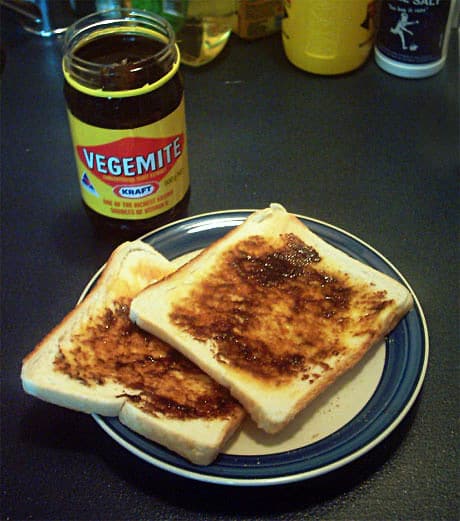
Vegemite, unnamed household, Port Airlie, Australia
After a week aboard a dive boat 100 miles off Queensland, I traveled along the coast, staying in homestays and jumping in the ocean, avoiding sea anemones at every stop. The Aussies were very nice and very generous and loved showing off their culture. My entire time in Australia, the Aussies kept talking about this diet staple. It sounded like something a comic book hero would eat.
They called it Vegemite. It’s this spread that’s as popular in Australia as peanut butter in the U.S. I felt Australian cuisine mirrored Britain’s too much. (That is NOT a compliment.) I had to try something authentically Aussie.
The couple I stayed with spread it on a piece of toast. It looked like black marmalade, not totally unappealing.
It tasted like coagulated motor oil.
It’s also not completely Australian. It’s actually much like Marmite, the British version that has been on tables in the UK since 1902. Vegemite was developed in 1919 when Marmite stopped exporting to Australia after World War I.
They took yeast dumped from breweries, broke down the yeast cells and blended the liquid extract with salt, celery and onion to form this black paste. It’s rich in Vitamin B and has no fat, sugar or animal content.
No wonder Aussies are so healthy. They buy 22 million jars of Vegemite a year.
(Spoiler alert: Pet lovers should skip the next item.)

Stir-fried dog, M.C. Blues, Yangshuo, China
I came to Yangshuo, located in Guangxi Province 280 miles (463 kilometers) northwest of Hong Kong, to see the famed karsts. They are the pyramid-shaped peaks sticking up alongside the rivers. They’re the subject of so many Chinese tapestries, some of which hung from my walls.
What I found was a restaurant that served what I feared I’d find in China. M.C. Blues serves rat and stir-fried dog. No, it is not widely found in Chinese restaurants. However, dogs are not pets in China. Westerners think eating dogs is disgusting. Muslims think eating pork is disgusting. Hindus don’t eat cows.
Who’s right?
However, when I went to Yangshuo’s public market and saw five mature healthy collies crammed into a wire cage meant for two chickens, I could see why people turn vegetarian.
As a travel food writer, I felt compelled to try. As mentioned above, rat wasn’t bad. Dog was almost all bones with little to no flavor.
Let’s just leave it at that.
Blood sausage, Western Soon Dae, Los Angeles
I love Korean food and L.A.’s Koreatown is the third most-densely populated neighborhood in the U.S. I was sure I’d find my beloved bulgogi at its most popular restaurant. But when I asked the waiter for the famed Korean BBQ, he laughed.
Soondae, as the restaurant name reflects, is the specialty of the house. Soondae in Korean means blood sausage. Further translation, blood sausage means boiled pig intestines.
My plate consisted of five sausages, cut into bite-size pieces, surrounded by dubious-looking meats. The inside of the sausage looked like a coagulation of a million tiny dead worms. It was as soft and mushy as sponge cake with an odd sweet taste to it. One of the surrounding meats was pig’s lung that was actually better.
Enjoy your day, everyone. Enjoy your lunch.


September 6, 2022 @ 12:18 pm
I would have left that line in!
What a fantastic read. It is one of your best — and that is saying something!
September 7, 2022 @ 6:54 am
Un po’ schifo, but thoroughly interesting and entertaining read! Ciao, Cristina
September 7, 2022 @ 8:24 pm
About eight LOLs in this column, John. Tremendous.